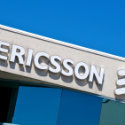Ericsson Stuck in Loss-Making Rut, Offloads Majority Stake in Media Unit
Shares in Swedish vendor sink after results miss analyst estimates and amid disquiet about strategic backtracking and management changes.

Ericsson revealed early Wednesday that it had failed to sell the entirety of its media business, instead offloading a 51% stake, and that it had slashed more than 10,000 jobs since October as it suffered another sharp fall in sales and saw losses widen in the final quarter of 2017. Ericsson has now reported five consecutive quarters of operating losses and is not predicting when it might reverse that trend. (See Ericsson Reports Q4, Full Year and Ericsson Offloads Media Solutions to Private Equity Firm.)
Citing weak 4G sales in China, the struggling Swedish equipment maker reported a 12% drop in revenues, to 57.2 billion Swedish kronor ($7.3 billion), compared with the year-earlier period, with turnover down 7% in constant-currency terms.
The company's operating loss grew from SEK300 million ($38 million) to SEK19.8 billion ($2.5 billion) over the same period. With analysts polled by Reuters expecting a loss of about SEK17.3 billion ($2.2 billion), Ericsson's share price was trading down 9% in Stockholm at the time of publication, at about SEK50.82 ($6.48).
Q4 2017 | Q4 2016 | YoY change | 2017 | 2016 | YoY change | |
Net sales | 57.2 | 65.2 | -12.3% | 201.3 | 222.6 | -9.6% |
Gross margin | 21.0% | 26.10% | -5.1 percentage points | 22.1% | 29.8% | -7.6 percentage points |
Operating income | -19.8 | -0.3 | N/A | -38.1 | 6.3 | N/A |
Operating margin | -34.5% | -0.4% | -34.1 percentage points | -18.9% | 2.8% | -21.7 percentage points |
Net income | -18.9 | -1.6 | N/A | -35.1 | 1.9 | N/A |
Cash flow from operating activities | 11.2 | 19.4 | -42.3% | 9.6 | 14 | -31.4% |
Net cash, end of period | 34.7 | 31.2 | 11.2% | 34.7 | 31.2 | 11.2% |
Source: Ericsson |
Despite the headline results, executives insisted that restructuring efforts were starting to pay off, with Ericsson's adjusted gross margin -- a closely watched metric -- edging up to 29.9% in the fourth quarter, from 29.4% a year earlier.
Hit by a downturn in its network equipment markets, Ericsson AB (Nasdaq: ERIC) has also struggled to fend off competition from Chinese rivals Huawei Technologies Co. Ltd. and ZTE Corp. (Shenzhen: 000063; Hong Kong: 0763). CEO Börje Ekholm, who took charge of the company this time last year, is determined to restore profitability and focus on a smaller number of core activities, including the development of 5G network offerings. (See Has the 5G Upturn Begun?, Ericsson Goes Dotty for 5G Small Cells and Ekholm's Vision of Slimmer Ericsson Lacks Detail & Dazzle.)
Figure 1: Still Smiling  Ericsson CEO Börje Ekholm faces concern that he is backtracking on strategic objectives.
Ericsson CEO Börje Ekholm faces concern that he is backtracking on strategic objectives.
His current target is to boost Ericsson's adjusted operating margin to more than 10% in 2020 from just 1% in 2017.
Having put Ericsson's media and cloud hardware businesses up for "review" last year, Ekholm today said that a 51% stake in the media solutions unit would be sold to a private equity company called One Equity Partners. (See Ericsson Moves Closer to Media Business Sale – Report.)
Ericsson did not disclose the financial terms of that agreement but said that employees and contractors would transfer to the new company upon closing of the agreement in the third quarter of 2018.
It will retain Red Bee Media, formerly its broadcast and media services outfit, after failing to attract worthy bids for the unit, and heralded improvements in profitability at that business in the fourth quarter.
On the organizational and leadership fronts, Ericsson revealed that it was setting up a new "emerging markets" business focused on innovation. Asa Tamsons, currently a partner at consulting group McKinsey, will lead that division from April this year. (See Ericsson Revamps Structure, Shuffles Top Team.)
Ericsson also said it would reduce its number of group functions from six to four, with the new emerging markets business to absorb technology and research functions.
There is also upheaval at the long-suffering digital services business area, which is to lose Ulf Ewaldsson as leader. Jan Karlsson, who heads up Ericsson's business support services, will become acting boss of digital services until Ericsson finds a permanent replacement. Ewaldsson will become an advisor to Ekholm but lose his seat on Ericsson's executive team. (See Ericsson's Ewaldsson Takes Aim at Telco 'Conservatism'.)
During an earnings call about the latest results, Ekholm insisted there had not been any kind of strategic backtracking after one analyst expressed disquiet about Ewaldsson's departure and Ericsson's failure to offload media assets.
"If we take the media solutions, we wanted to maximize the ownership stake without providing more capital because it is strategically important for customers," he said. "On Red Bee, I would have preferred to get a higher bid and we didn't and will not just give it away.
"Ulf [Ewaldsson] has done a really good job on products and the R&D function and we've got stability in customer projects," Ekholm added. "Now Ulf elects to leave and we've put in Jan to focus on the execution and cost side. This is the next step in the turnaround."
Next page: Profitability pain
Profitability pain
But despite wider efforts to bolster profitability, Ericsson's overall net loss in the fourth quarter grew to SEK18.9 billion ($2.4 billion) from SEK1.6 billion ($200 million) a year earlier.
Ericsson had revealed earlier this month that asset write-downs would cost about SEK14.5 billion ($1.9 billion) in the fourth quarter. It also took a SEK3.2 billion ($410 million) hit because of "customer project adjustments" and incurred about SEK2.4 billion ($310 million) in restructuring charges. (See Ericsson Lurches to $1.8B Write-Down.)
However, executives expressed confidence that Ericsson would not have to make further write-downs and that cost savings would become "visible" this year.
Ericsson has been working to a target of reducing annual costs by around SEK10 billion ($1.3 billion) by mid-2018 and said the annual "run rate" had reached about SEK6 billion ($760 million) in the fourth quarter. "The effect in P&L [the profit and loss statement] is limited because of the time delay but we see it coming through in improved gross margins and there will be increased visibility of savings in the first half of 2018," said Carl Mellander, Ericsson's chief financial officer.
After Ericsson was reported to be seeking as many as 25,000 job cuts last year, its results showed that it slashed 14,300 roles in the second half of 2017, including 10,000 jobs in the fourth quarter alone, as part of cost-cutting activities. (See Ericsson Plans 25,000 Job Cuts – Report.)
It finished 2017 with 100,735 full-time employees on its books, down from 111,464 in 2016, noting that some of the cuts affected contractors and that it recruited about 500 employees for its R&D unit in the second half.
"That is a long-term investment and we'll continue that," said Ekholm. "We see also that we need to make sure we are well positioned for 5G. The race is heating up in North America as well as North East Asia and we need to invest to make sure we are a leader."
Following a tough 2017, in which it estimates the overall radio access network market shrank by 8%, Ericsson revealed that fourth-quarter sales at its main networks business were 9% lower than in the year-earlier period, at about SEK36.3 billion ($4.6 billion), when adjusted for foreign exchange effects.
Want to know more about 5G? Check out our dedicated 5G content channel here on
Light Reading.
The company blamed a slump in 4G business in China but also claimed to have grown its share of the Chinese market thanks to customer enthusiasm for its Ericsson Radio System, a new baseband platform that can be software-upgraded to support 5G services as and when those become available.
Its eagerness to build market share has provoked analyst jitters that Ericsson is heavily discounting equipment to land deals. But while the market share strategy had an impact on gross margins in the fourth quarter, the vendor insisted it would not have a "material impact" this year. (See Ericsson in China: Dangerous Liaisons?.)
Moreover, despite any negative impact from China, the gross margin at the networks business rose to 35.9% in the fourth quarter, from 31.6% a year earlier. Hit by expenses and capitalization, the networks operating margin shrank from 13.3% to 11.5% over the same period, against a 2020 target of 15-17%.
The digital services unit continues to struggle. Even though sales were down just 3%, in constant-currency terms, to around SEK12.9 billion ($1.6 billion), the operating loss widened to around SEK2.7 billion ($340 million), from SEK200 million ($25 million) a year earlier.
Ekholm said the losses were "expected but unacceptable."
"We need to get the financial situation in digital services under control," he told analysts and reporters. "It will take a while to show improvements coming through."
Elsewhere, Ericsson's managed services business also reported a 3% dip in sales, in constant-currency terms, to SEK6.2 billion ($790 million), and an operating loss of SEK300 million ($38 million), while the "other" unit -- which includes media solutions and Red Bee -- registered a 14% fall in sales, to SEK2 billion ($250 million), and an operating loss of SEK800 million ($102 million), the same as in the year-earlier period.
Despite the difficulties, Ericsson landed some potentially important network deals with customers including Verizon Communications Inc. (NYSE: VZ) and Deutsche Telekom AG (NYSE: DT) toward the end of 2017, and it remains confident that RAN market conditions will improve this year. (See Ericsson Replaces Major Rival as DT Supplier in 5G Deal and Ericsson & Samsung to Supply Verizon With Fixed 5G Gear .)
However, it expects the international RAN market to shrink 2% this year and 1% in 2019 before stabilizing in 2020, when investments in 5G should be underway in various markets.
— Iain Morris, News Editor, Light Reading
About the Author(s)
You May Also Like












